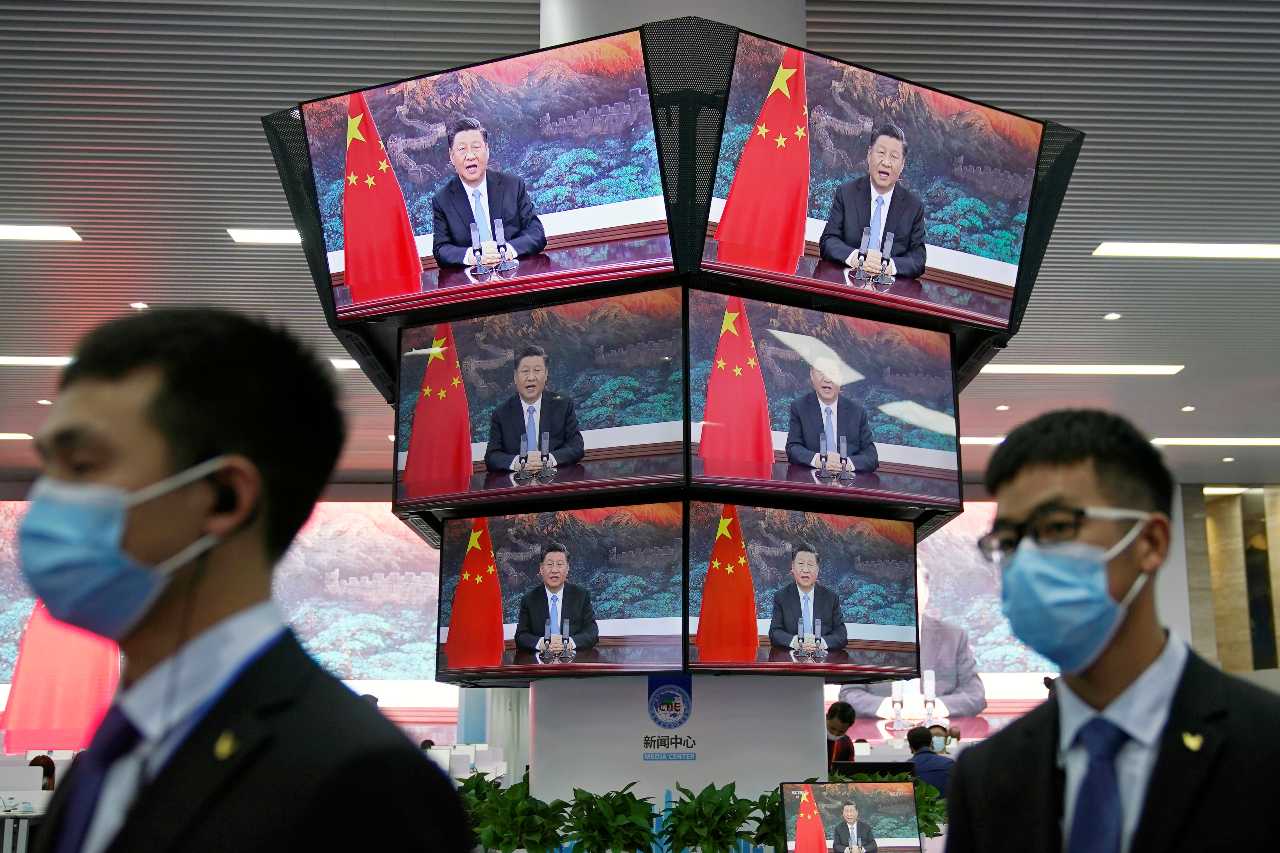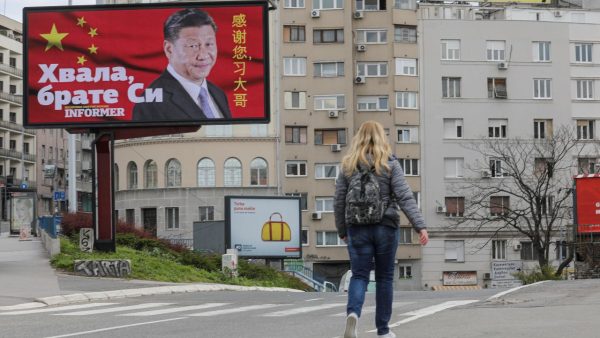For over a decade, China has been working to build influence beyond its own borders. One region of particular concern for Beijing is Central and Eastern Europe. Through economic investment, diplomatic relationships, cultural bridge-building, and in particular disinformation and public diplomacy campaigns, Beijing has attempted to persuade and coerce governments, organizations, and media throughout the region. If the Chinese Communist Party (CCP) is able to build up its influence successfully, it would allow China to have an increasingly powerful input into policymaking across European and regional institutions via member states. Tracking, quantifying, and analyzing all the vectors of Beijing’s influence efforts is vital to help the nations of Central and Eastern Europe forge sound, independent, and democratic policies for the future.
As part of the #CCPinCEE project, CEPA worked closely with Omelas and 17 in-country experts to create a dashboard to analyze CCP online influence over digital environments in Central and Eastern Europe. By using exploratory data analysis, correlation analysis, and regression modeling, CEPA and Omelas were able to provide a detailed snapshot of the CCP’s digital influence campaigns across 17 countries, revealing critical insights into how China is attempting to build influence, its successes and failures throughout the region, and how democracies can respond to these influence operations.
CEPA and Omelas gathered more than two dozen metrics, which were derived from both CCP-created media and domestic media referencing China, and tested which of these best predicted polling data on each country’s favorability towards China. In order to understand the extent of online influence in each country, CEPA and Omelas analyzed more than 820,000 social media posts, communication app messages, and online articles from October 1, 2021, through April 1, 2022, from countries that are currently or formerly part of the 17+1 initiative.
Metrics with a statistically significant correlation were then used to create a weighted score, summarizing the online influence of CCP and pro-CCP narratives in each country. In-country experts provided helpful research, sources, and feedback to ensure that this dashboard incorporated key domestic and CCP sources. The #CCPinCEE research reports written by local experts served as the baseline for this index and were used to help weigh the scores in three main brackets: minor, some, and considerable. Each level represents the intensity of CCP influence in each country.
As the map shows, Lithuania has the lowest influence level across the region, largely due to two factors. Firstly, Lithuania’s withdrawal from the then 17+1 (now 14+1) initiative, which sparked the other two Baltic countries to withdraw as well, and secondly, the opening of the Taiwanese Embassy in Vilnius, which received serious backlash from Beijing. These developments have strained and drastically reduced China’s involvement in Lithuania to almost non-existent levels.
The data reveals that countries outside the European Union are far more susceptible to Chinese influence as China exploits “gaps” that national governments or international organizations have failed to address. Specifically, the CCP has a strong hold on the information space in the Balkans as Beijing has invested in infrastructure projects throughout the region, economically tying theses countries to China. One economic strategy that the CCP uses to build significant influence and leverage is debt trap policy, which is evident in Montenegro.
Despite Beijing’s best efforts to build influence, the reality is that the CCP has only succeeded in some countries in Central and Eastern Europe, usually those where it already had significant influence to begin with. According to Gallup polls carried out in 2020 and 2021, public attitude towards China has largely decreased. However, there was an uptick in public opinion in the Balkan countries, mostly due to COVID-19 aid that China delivered to these countries. Poland is a particular outlier, reporting an increase in public opinion towards China, but maintaining low levels of CCP influence in the media space. While the CCP has expanded its footprint in Poland in recent years, the favorability and reach of China are projected to decrease given Beijing’s complicity with the war in Ukraine.
Total and Sentiment Analysis
The below chart lists the total number of posts (both in domestic media and CCP-sponsored media) that refer to China and the CCP in each respective country. Omelas collected the accounts, channels, websites, and RSS feeds of the top 10 newspapers and top 10 TV channels (collectively “outlets”), excluding any sports or entertainment outlets, in select countries, ranked by the number of visitors to their websites. We then partnered with local experts to supplement the initial list with additional important outlets.
Omelas applied sentiment analysis at the sentence level, scoring each post from most negative -1 to most positive +1, in regards to how China and the CCP are portrayed. Sentiment analysis conducted by Omelas classified posts that both positively and negatively reference China and the CCP. Omelas collected engagements (likes, shares, comments, and equivalents) on the initial ingestion of data and then updated those numbers three times in the 72 hours after initial ingestion.
North Macedonia has the highest positive sentiment analysis, largely attributed to Bejing’s recent increase in its social media presence in the country. In contrast, Lithuania’s high negative sentiment correlates with the lack of any CCP-sponsored media and a trend of more negative posts related to issues of China and the CCP.
While there are differences in the total number of posts, engagements, and sentiment across CCP-sponsored and domestic media, the discrepancies between the overall sentiment analysis are limited.
Engagements
By analyzing the engagements, we find patterns on whether positive or negative coverage of China gains more traction. To calculate the total number of engagements, Omelas derived metrics using inputs such as engagement per post for the CCP's media, the share of total engagements in a country that went to CCP media, and the engagement ratio of positive to negative posts.
The number of CCP engagements per CCP post (engagements/posts) gives a measure of how many people, on average, interact with CCP posts digitally. The ratio of positive China-domestic-coverage engagements to negative domestic engagements (engagements on positive domestic posts/engagements on negative domestic posts) adds information on whether negative or positive coverage of China gains more traction.
Based on the data Omelas collected, a one-unit increase in CCP engagements per post is associated with a .0030% increase in CCP approval. A one-unit increase in the ratio of positive to negative domestic engagements results in a 0.0006% increase in CCP approval. Lastly, a one-unit increase in CCP engagement share is associated with a .000008% increase in CCP approval.
To falsely inflate engagement rates, China uses a variety of tools, such as bots, to like and share positive social media posts. This is specifically relevant in the Czech Republic. As the data shows, the Czech Republic has the highest CCP media engagement rate, with approximately nine people interacting with each CCP media post. However, it is difficult to sift out which engagements are real, and which ones are manufactured.
While the Czech Republic has the highest CCP media engagement rate, Albania has the highest engagement rate for positive posts, with approximately nine people interacting with each positive post. The CCP is very active in Albania, a trend that is projected to increase with multiple new Chinese-funded economic and cultural projects on the horizon.
Albania, however, is an exception. The majority of the countries’ engagements between positive and negative posts hover around 1-2. Overall, positive and negative narratives are similarly shared across the 17 countries.
Methodology
For any questions about the methodology, sources used, or research, please view the methodology. Please contact sarajane.rzegocki@cepa.org for any further questions.
Acknowledgments
This dashboard was created by the Center for European Policy Analysis and Omelas with thoughtful input and cross-examination from 17 in-country experts. This project was made possible with funding from the United State Department of State Global Engagement Center.





